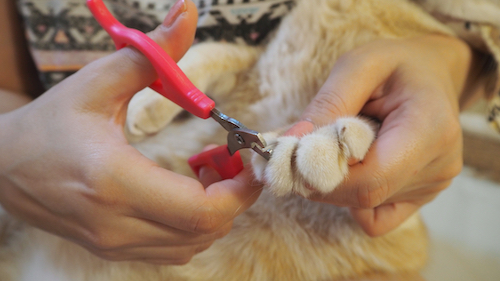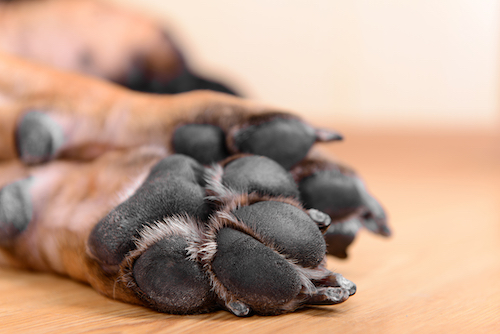 One common injury that you could come across in your pet is a damaged or broken nail or dew claw. The dew claw is found on the leg and the nails on the end of their toes.
One common injury that you could come across in your pet is a damaged or broken nail or dew claw. The dew claw is found on the leg and the nails on the end of their toes.
Nails can get damaged when they are too long and not cut back or where they are cut back too much, causing bleeding. Nails usually are worn down as they walk but sometimes they get too long and need trimming. It is more common for the front nails to get damaged and they can get caught or torn off as the animal walks or plays. Wounds around the nails are also prone to infections as it is difficult to keep them clean, due to the fact that the animal is constantly walking on them.
The first thing we need to consider is that although these may be minor injuries, as you may have found yourself when you tear a nail, they can be very painful, and the animal may become aggressive or difficult to handle. It may be that only a vet can help but there are some steps you can take if the animal will let you.
Firstly, think about safety for both you and the animal and consider the use of a muzzle.
What you need to then do is to inspect the area and see what the damage actually is. Look closely at the nails and pads and carefully move them to identify the area. You are looking for loose nails, bleeding, foreign objects and swelling. You may see a hanging section of the nail that can be easily removed with nail clippers, but this is not always the case. If you cannot easily remove it, you may need to take the animal to a vet as they may need a local anaesthetic, or they may need to be tranquillised in order for the vet to effectively help the animal.
Often, once the broken nail is removed the animal will feel much better quickly.
Now let’s look at bleeding. Do not panic when you see a lot of blood, nails often bleed a lot, but these capillary bleeds can be stopped easily. If bleeding cannot be controlled, you need to get the animal to a vet quickly.
You can control bleeding by holding a gauze dressing over the site, keeping it on tight and holding it for a few minutes to allow time for a clot to form and the bleeding to stop. There are also different powders you can purchase that stop bleeding or alternatively you can use a spray on plaster.
You can apply a dressing to the paw which will keep the pressure on the site and you may find it only has to be left on for a few hours.
Bleeding is a good way of flushing dirt and bacteria away from the injury site, but the paws will have more bacteria than other parts of the body as the animal walks on them, picking up whatever is on the ground. You can clean the area with first aid sprays, which are a very good way of ensuring the area is clean before bandaging.
Finally, you can somewhat prevent damage to nails and claws by ensuring you check them regularly and getting them cut as and when necessary, not forgetting the dew claw on the lower leg.


Pingback: Operations and x-rays can be frightenning for a pet owner